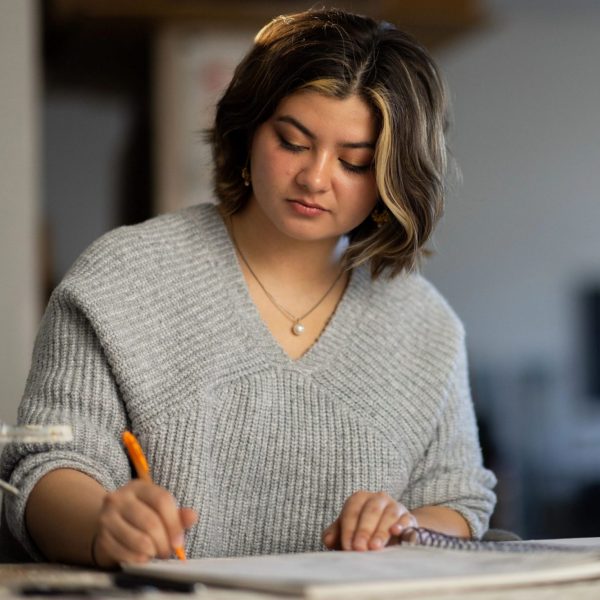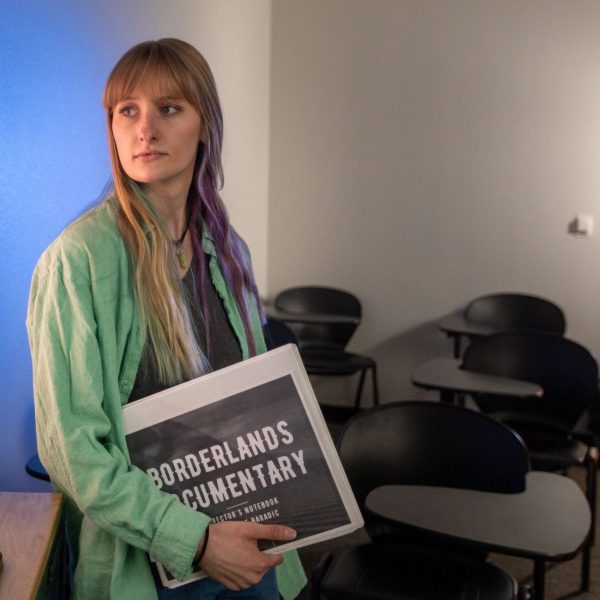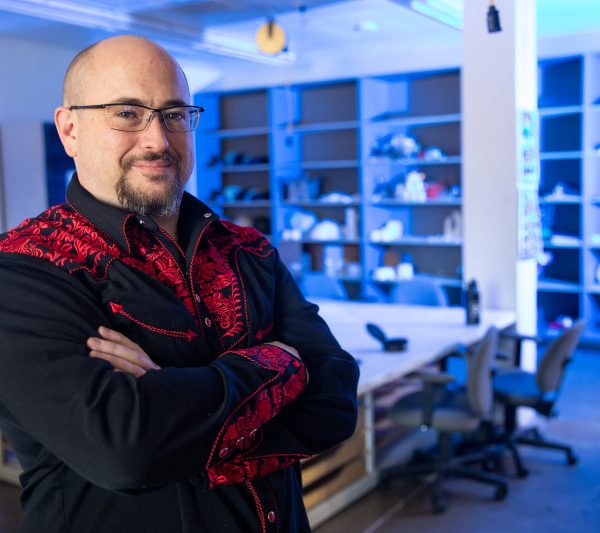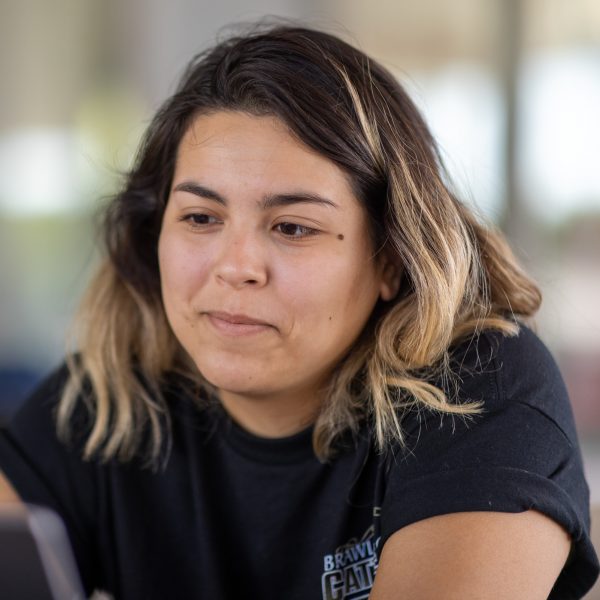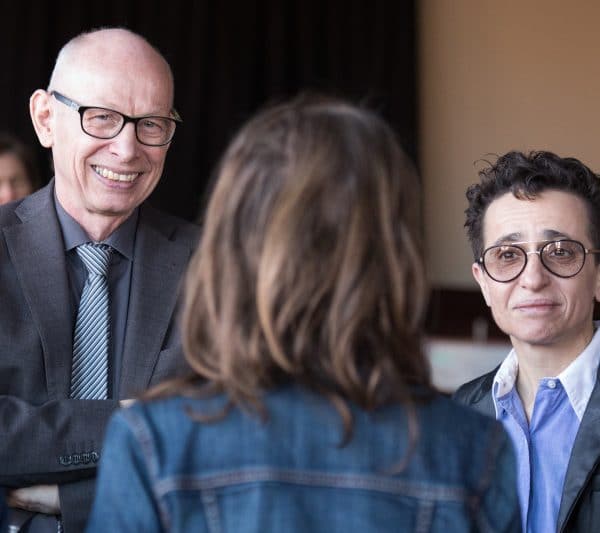The numbers are chilling.
A compilation of hate crime data in the United States found a 124 percent increase in anti-Asian hate crimes in 2020 over 2019. In 2021, that number increased to 339 percent. Ehsa Murray is putting human faces on these statistics through stories and illustrations. The junior Studio Art student will present her project at the Undergraduate Symposium on April 28.
Murray, who is also minoring in Asian Studies and Japanese, is collecting stories from friends and family about their experiences of racism. She’ll pair the stories with her art and put it all together in a zine she’s calling The Micro and Macro of Anti-Asian Racism.
This year will be the second time she has participated in the Undergraduate Symposium. Murray is part of the Interns to Scholars program, where undergraduate students work as paid interns who participate in faculty research and scholarly or creative projects. “That experience, presenting my art and having to explain it, I really enjoyed it,” she says. “I also found it incredibly helpful because a large part of art is exhibiting it and explaining your thought process and the actual technical process.”
But first, she’s busy conducting interviews and making art. Murray plans to format her zine with text from her interviews accompanied by art in mostly watercolors and ink. For Murray, who is half Japanese and half white, and whose grandmother was imprisoned in a US internment camp during World War II, this project is personal.
Her purpose is twofold.
“Mainly, I’m just hoping to raise awareness. I came to the realization in my Asian American Studies class that a lot of people don’t really know what the Asian American experience is like. But within the Asian American community, I really want to make space for other Asian Americans to talk about themselves and their culture and how their experience with racism has affected them.”
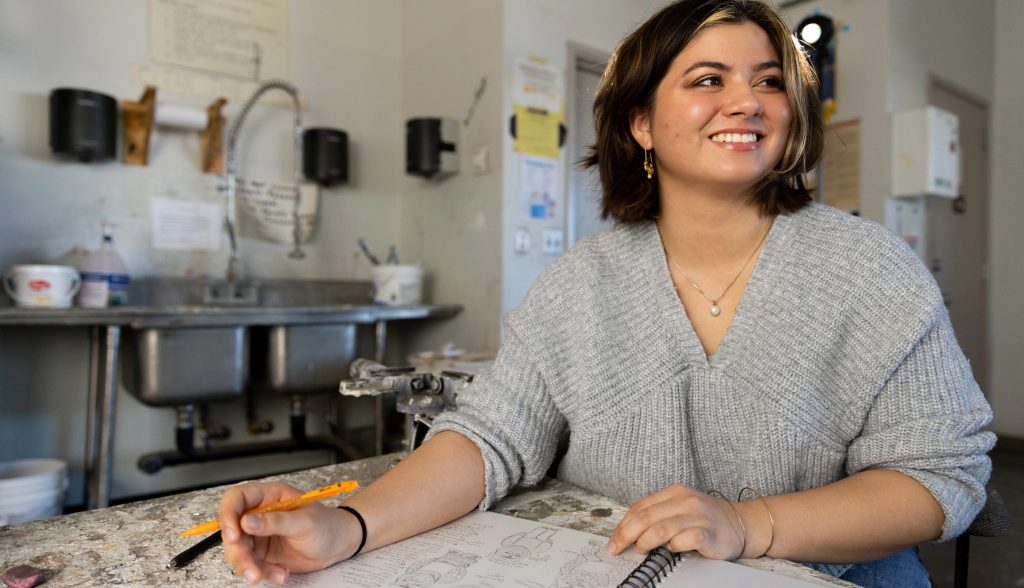
From the interviews she has conducted so far, Murray found a common thread: shame associated with food. “A lot of people I’ve interviewed have talked about how they were afraid to bring food from their culture to school for fear of people making fun of them and feeling like an outsider.” She explains that’s an example on the micro end of the racism spectrum.
On the macro end of the spectrum are events like the March 16, 2021, murders of eight people, six of whom were Asian women, in Atlanta. Murray vividly recalls the fear she felt when the news broke. “All my friends, we were frantically calling and texting each other to ask, ‘Are you guys okay? Have you guys seen the news?’” Then she got a call from her mom. “I don’t really present as Asian, so as a result, I’m often perceived as being ethnically ambiguous. I remember my mother telling me not to tell other people I was Asian for fear that I would be harmed otherwise. We were all very scared.”
School of Art Assistant Professor Debra Edgerton is Murray’s mentor and has provided the support and encouragement Murray needs as she tackles a painful and complicated subject. “She’s been an absolutely fantastic resource,” Murray says. “She herself is also half Japanese, so it’s really nice to work with a mentor who not only understands where I’m coming from but also can offer her own experience. I’m very grateful; she’s been helping me every step of the way.”
Murray is on track to graduate in the spring of 2024. After that, she hopes to spend some time teaching English in Japan and pursue a master’s degree. Ultimately, she has her sights set on a career in publishing. The NAU arts program is providing her with a strong foundation for whatever comes next.
“I’ve loved the arts program. Pretty much every professor I’ve had has fully encouraged me to pursue whatever kind of artistic ideas or endeavors I wanted and helped me a lot with developing my style.”


